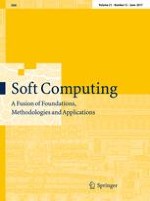14-01-2016 | Methodologies and Application
An analysis of multi-dimensional data containing emphasized items by self-organizing map and its application to sightseeing information analysis
Published in: Soft Computing | Issue 12/2017
Log inActivate our intelligent search to find suitable subject content or patents.
Select sections of text to find matching patents with Artificial Intelligence. powered by
Select sections of text to find additional relevant content using AI-assisted search. powered by
